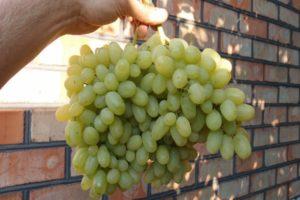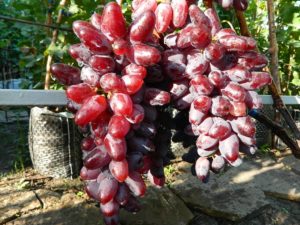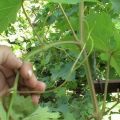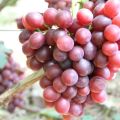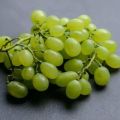Description and characteristics of Kesha grape varieties (Talisman), its planting and care
Domestic breeders contributed to the emergence of the Kesha grape variety. This culture is distinguished by good resistance to the effects of both pathogenic microorganisms and the environment. The grapes give a good and large harvest, exceeding the volume of several kilograms from one vine. The berries have a pleasant taste and do not wrinkle during transportation.
Breeding history of the variety
This grape variety was created by Kuban breeders. This culture is a hybrid. The latter was obtained by crossing the Moldavian varieties White Beauty and Delight. Moreover, the latter was also withdrawn at the Kuban Institute.
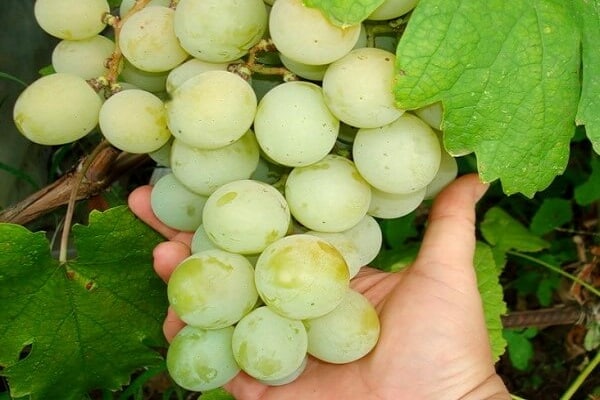
The name Kesha is used not only for this variety. There are several cultures with a similar name that share similar characteristics.
The variety has retained the features inherent in the parental forms. In particular, the grapes have gained the ability to withstand the effects of many diseases, and provide a high yield of each vine.
Description of Kesha grapes
There are two varieties of this grape variety: Kesha-1 (Talisman) and Kesha-2. The latter is also a hybrid. To get the second grade, they crossed the first culture and Kishmish Radiant.
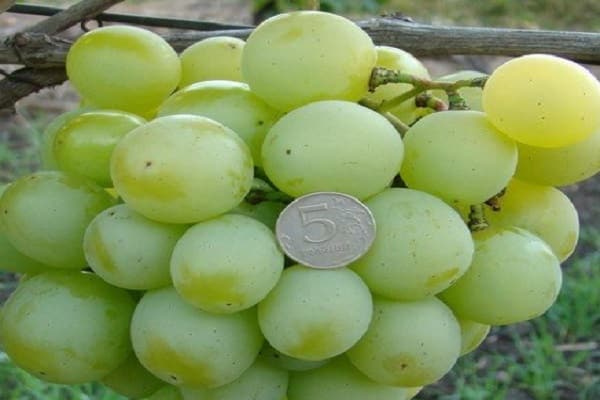
The description of this variety says that the grapes are among the early maturing crops. The berries are ready for making wine about 140 days after flowering. The fruits can be harvested towards the end of August.
A 5-meter vine grows from the shoots of this culture. The plant is self-pollinated. That is, flowers of both sexes are present on the vine.
The bunches are characterized by large size and the absence of peas (plant growth is not accompanied by the formation of small berries). Each fruit has a firm and firm texture. The total length of each bunch reaches 24 centimeters.
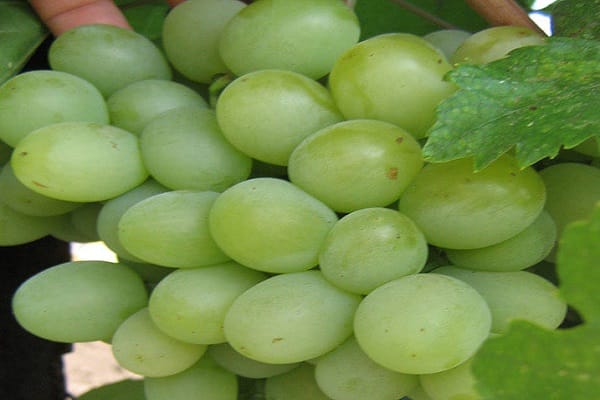
The brushes, as they grow, acquire the shape of a cylinder or a cone. In mature plants, the weight of the bunch reaches 1 kilogram. Due to such high rates, more than two brushes should not be allowed to appear on one shoot.
During the ripening period, green berries are formed on the vine, which, having reached technical ripeness, acquire a light yellow color. The fruits are characterized by a homogeneous structure and a sweet taste.
The skin of the grapes is firm, but easy to chew during meals. Thanks to such a shell, the bunches are not damaged during transportation. Therefore, Kesha grapes are often grown for sale.
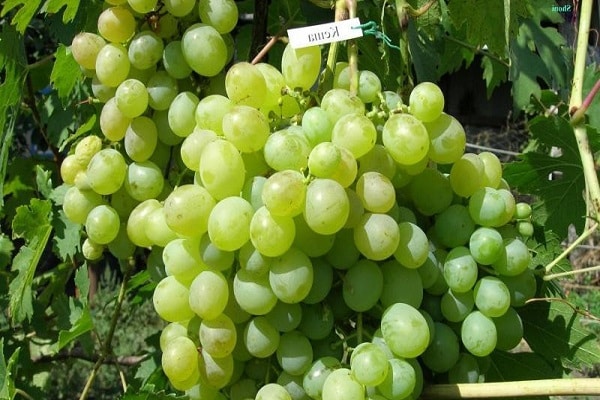
The fruits of this culture are characterized by the following features:
- the sugar concentration is 20-25%;
- the acid content is 4.8-8 grams per liter;
- the weight reaches 14 grams.
The shape of the berries is round, and there are no more than three seeds inside the fruit.
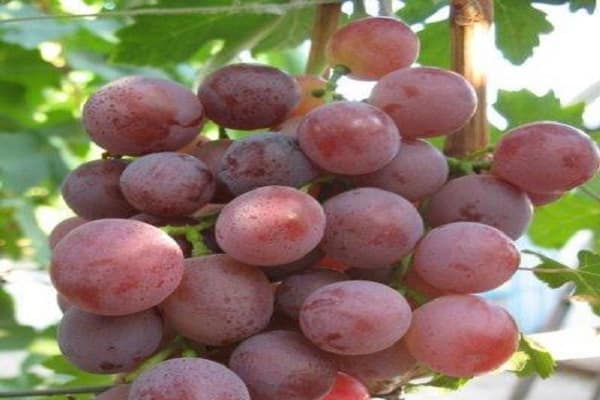
Species diversity
Kesha-1 is characterized by high (more than related forms) resistance to subzero temperatures. At the same time, if grapes are grown in the middle zone of the country, it is recommended to plant the vine inside greenhouses.
The talisman has good immunity to most varieties of pathogenic fungi. Dangerous pathogens for the variety include mildew and gray rot. An important feature of the Talisman is that only female flowers are present on the vine. Therefore, together with Kesha-1, it is recommended to plant other varieties on the site that can pollinate the plant.
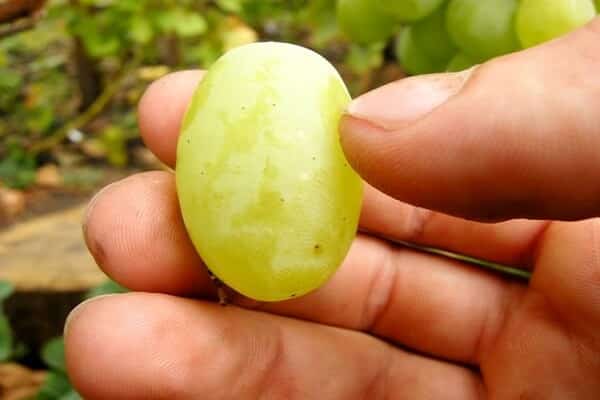
The talisman grows quickly, therefore it requires constant pruning. It takes up to 135 days for grapes to ripen. The total weight of a bunch on an adult plant reaches 1 kilogram. The brushes, as they grow, acquire a conical or loose shape. Ripe berries have a light red hue.
Kesha-2 (Kesha Muscat, Tamerlane, Zlatogor) yields a harvest 130 days after the first flowers appear. The berries of this hybrid have the following characteristics:
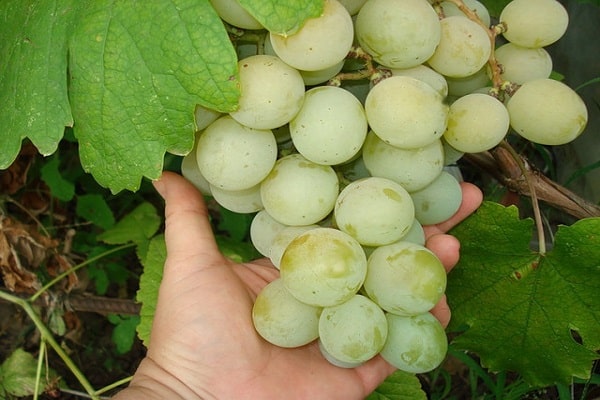
- dimensions - 30 * 35 millimeters;
- weight - 16 grams;
- sugar level - 23%;
- acidity - 8 grams per liter.
This hybrid is self-pollinated. The brushes of the plant are able to hang on the vine for several weeks without losing their original characteristics.
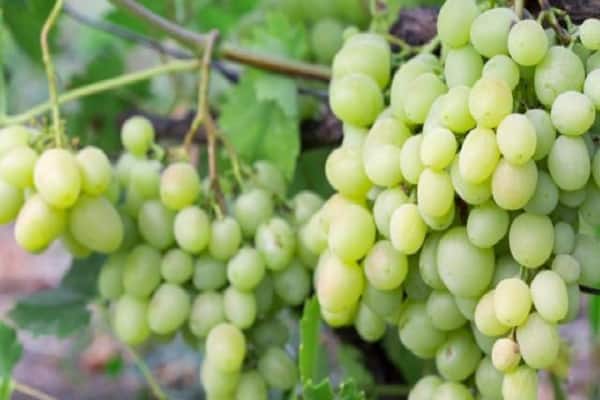
What are the benefits?
The grape has many benefits, including the following:
- high productivity;
- relatively low care requirements;
- regular appearance of fruits;
- uniform ripening of berries;
- fast acclimatization to a new growing region;
- pleasant taste;
- good presentation;
- long shelf life;
- good immunity to fungi.
Among the disadvantages of the variety is the average resistance to diseases characteristic of most grape varieties. This hybrid does not tolerate frost well, provided the vine is left uncovered for the winter. In addition, due to the rapid growth, the plant must be pruned in time. The remaining shoots and stepchildren form a crown for several months, which interferes with the ripening of the fruits.
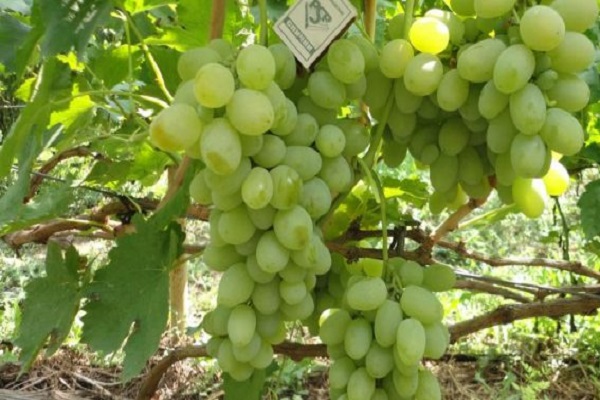
Main characteristics
The grapes can withstand, on average, frosts down to -23 degrees. Therefore, the culture is planted in Central Russia, provided proper shelter is provided. The berries are able to lie in the refrigerator for a long time, retaining their original properties.
The Kesha variety is used for growing on an industrial scale. The popularity of grapes is due to their high transportability and good marketable type of berries.
Plant cuttings take root quickly. With proper care, the vine begins to produce crops 2 years after planting. Despite the fact that grapes can withstand the effects of fungal microorganisms, the plant requires regular treatment with brodsky liquid and fungicides, which will protect the culture from the harmful effects of bacteria and powdery mildew.
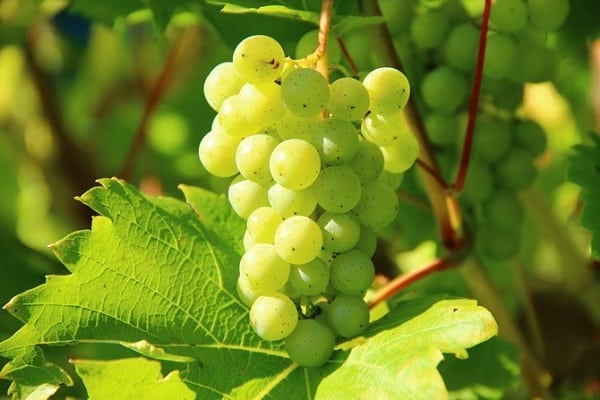
The Kesha variety is a perennial variety. Subject to the rules of cultivation, the vine gives a harvest for more than 10 years.
The ripening time of the variety
Kesha grapes yield a harvest 125-135 days after the first flowers appear. The harvest begins in the middle or at the end of August. Bunches can hang on the vine until September without losing their presentation and taste.
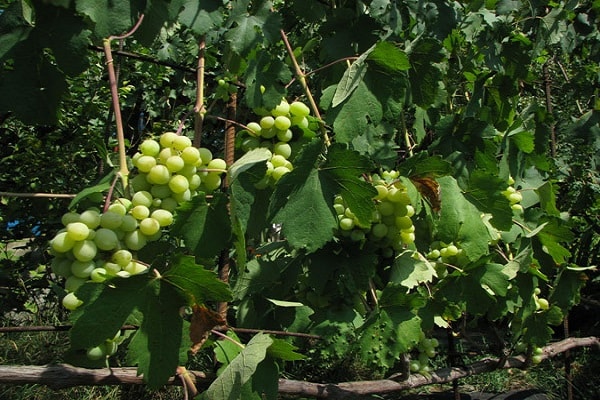
Landing features
Vines of the Kesha variety are recommended to be grown in black soil, since the plant has high requirements for the composition of the soil. The culture has a long root, which must be considered when choosing a growing location. If the groundwater is close to the surface of the earth, it is recommended to dig a hole in another part of the site.
Planting of grapes is carried out provided that the ambient temperature exceeds +15 degrees, soil - +10 degrees. For Central Russia, early spring is considered a suitable period for growing seedlings, for the south of the country - spring and autumn.
The distance between plants should be more than 1.5 meters. This interval should be taken into account when determining where the grapes grow.
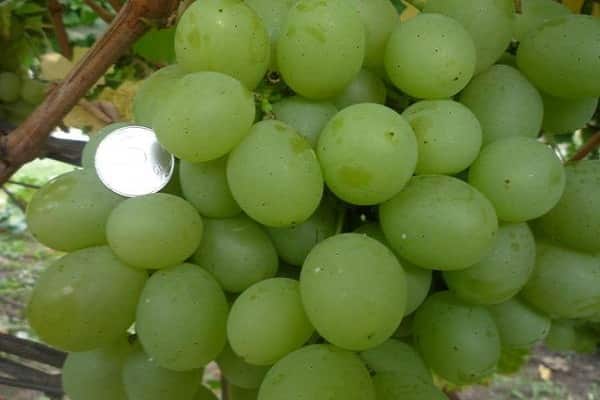
The plant is planted in soil mixed with phosphorus-potassium fertilizers and humus. At the bottom of the pit, a drainage layer is necessarily formed, which will prevent stagnation of fluid and the development of diseases of the root system.
After covering with soil, the neck of the seedling should remain above the ground at a level of 5 centimeters. Upon completion of planting, the aerial part of the cutting is cut into 2 buds. At the same time, it is recommended to install a support that will ensure the formation of a bush of the correct shape. After completing all the manipulations, the seedling needs to be watered with three buckets of water.
A drainage system should be formed near the grapes, which will remove excess moisture.
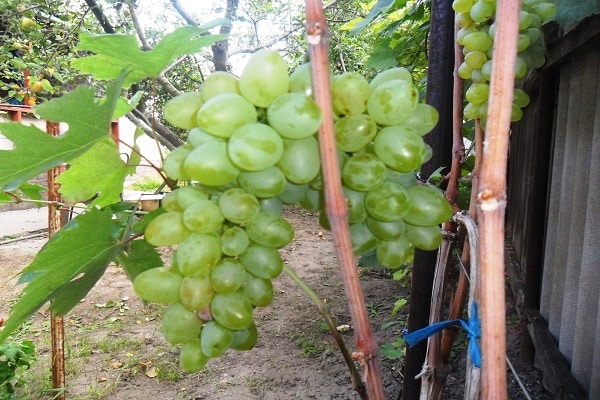
Care and cultivation
In the first year after planting grapes requires constant watering and 2-3 times treatment of the vine with fungicides. Later, it is necessary, during the season, to remove excess shoots, thereby giving the bush the correct shape.
Twice a year the vine requires abundant watering (13-14 liters of water): the first time - before the buds swell, the second time - after the grapes have flowered. For normal crop growth, it is enough to apply phosphorus-potassium fertilizers once.
During the season, you must regularly mulch the soil using manure. Dried stems and defective branches should be removed, otherwise the rate of plant development will decrease. Pruning is carried out in early spring or autumn.
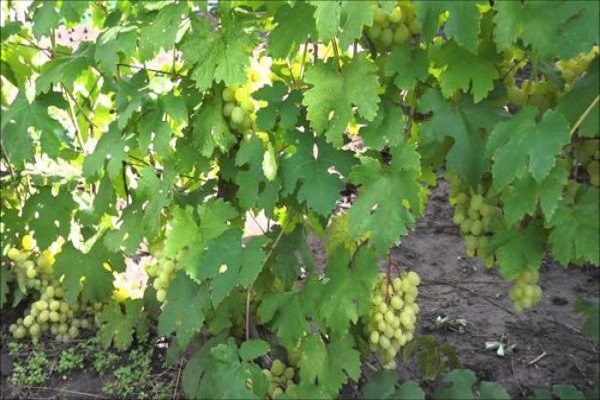
All branches, including those that are fixed on the support, must be removed and laid to the ground before the onset of frost. For secure fixation, it is recommended to use a wire. After that, the vine must be covered with foliage or dry branches, and a plastic wrap must be laid on top.
To accelerate fruiting, a woody stalk is used, which is kept for 30 seconds in a 1-3% solution of copper sulfate, and then grafted onto the plant.
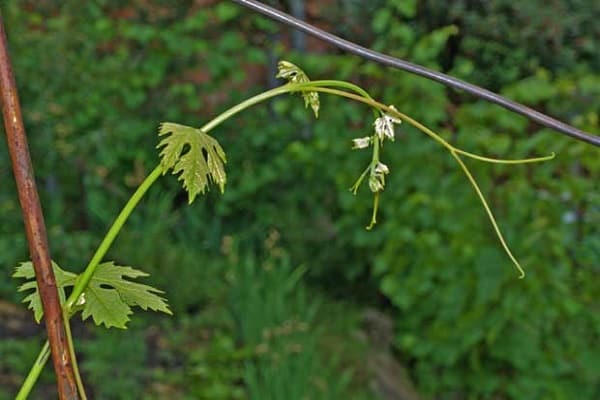
About diseases and pests
The Kesha variety is susceptible to the following pests:
- Powdery mildew. This fungus attacks the leaves. Powdery mildew is characterized by rapid development and appears as a yellowish bloom on greenery. To combat this pest, fungicides and a solution of ferrous sulfate are used.
- Gray rot. Infection occurs due to high humidity. Gray mold causes brown spots to form on the leaf surface. In case of infection, the affected parts are removed.
- Ticks. They provoke the appearance of brown, light or yellow spots on the surface of the leaves. Tick-borne infection is dangerous to humans.
Kesha grapes are rarely affected by these pests. If signs of infection appear, you must immediately process the plant.

